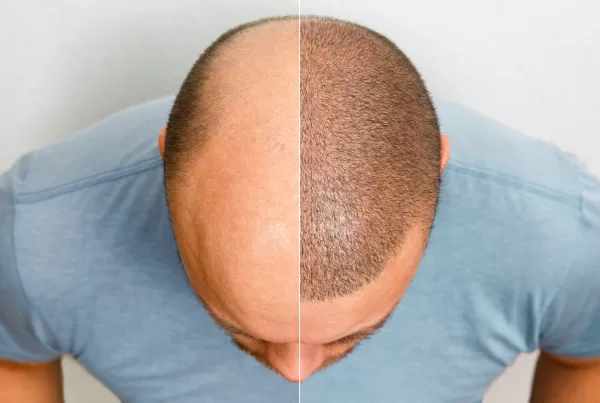Everyone dreams of having a thick, healthy head of hair, but factors like aging, genetics, or other causes can lead to hair loss. Fortunately, hair transplant is an excellent option to overcome this issue. In this article, we’ll provide a general overview of hair transplantation and delve into the different types of hair transplant procedures and the treatment processes.
What Is Hair Transplantation?
Hair transplantation is an effective way for individuals seeking a permanent solution to reverse hair loss. This procedure involves transplanting your own hair from areas where it’s still growing to the areas affected by hair loss, resulting in denser and more natural-looking hair.
Hair transplantation is an innovative and highly effective procedure that offers a long-lasting solution for individuals who are looking to combat the effects of hair loss. It involves a meticulously planned process of moving your own healthy hair from areas where it continues to grow to those affected by hair loss, ultimately leading to the restoration of thicker, more voluminous, and naturally-looking hair.
Types of Hair Transplants
FUE (Follicular Unit Extraction): FUE is the most popular hair transplant method, preferred by many. This technique involves extracting individual hair follicles and transplanting them to the areas with hair loss. It’s a minimally invasive approach that leaves no visible scars and offers a fast recovery process.
FUT (Follicular Unit Transplantation): The FUT method involves surgically removing a strip of hair from the donor area and transplanting this strip of hair to areas with hair loss. This technique is suitable for individuals with more significant hair loss issues.
DHI (Direct Hair Implantation): DHI is a technique where hair follicles are directly implanted into hairless areas using a specialized device. It offers a quicker recovery time and leaves minimal scarring.
Hair Transplant Treatment Process: A New You!
Consultation and Evaluation: The first step is to consult with a specialized hair transplant doctor. The doctor will determine the cause of your hair loss and recommend the most suitable treatment method.
Harvesting Hair Follicles: During the hair transplant procedure, hair follicles are harvested from the patient’s donor area. The specific technique may vary depending on the chosen method.
Transplantation Process: Once the hair follicles are harvested, they are meticulously transplanted one by one or in groups into the areas with hair loss. This process is carried out by skilled hands and results in a natural appearance.
Recovery and Results: The recovery period after a hair transplant is typically fast. You can usually return to your daily activities within a few days. Initially, some of the transplanted hair may fall out, but new hair will begin to grow quickly.
Long-term Care: After a hair transplant, it’s essential to follow the recommended care guidelines to maintain the long-term health of your hair.
Hair transplant is an effective and permanent solution for those looking to address hair loss issues. To determine the best hair transplant method for you, it’s crucial to consult with an expert. With proper planning and a professional approach, you can reclaim your lost hair and boost your confidence. Hair transplantation can be the beginning of rebuilding your self-esteem and self-assurance.





